
Robert STEUCKERS:
En souvenir de Dominique Venner
Il faut que je l’écrive d’emblée: je n’ai guère connu Dominique Venner personnellement. Je suis, plus simplement, un lecteur très attentif de ses écrits, surtout des revues “Enquête sur l’histoire” et “La nouvelle revue d’histoire”, dont les démarches correspondent très nettement à mes propres préoccupations, bien davantage que d’autres revues de la “mouvance”, tout bonnement parce qu’elles exhalent un double parfum de longue mémoire et de géopolitique. Lire les revues que publiait Dominique Venner, c’est acquérir au fil du temps, un sens de la continuité européenne, de notre continuité spécifique, car je me sens peut-être plus “continuitaire” qu’“identitaire”, plus imbriqué dans une continuité que prostré dans une identité figée, mais c’est là un autre débat qui n’implique nullement le rejet des options dites “identitaires” aujourd’hui dans le langage courant, des options “identitaires” qui sont au fond “continuitaires”, puisqu’elles veulent conserver intactes les matrices spirituelles des peuples, de tous les peuples, de manière à pouvoir sans cesse générer ou régénérer les Cités de la Terre. Lire “La nouvelle revue d’histoire”, c’est aussi, surtout depuis l’apport régulier d’Ayméric Chauprade, replacer ces continuités historiques dans les cadres d’espaces géographiques précis, dans des lieux quasi immuables qui donnent à l’histoire des constantes, à peine modifiées par les innovations technologiques et ballistiques.
J’ai découvert pour la première fois un livre de Dominique Venner dans une librairie bizarre, qui vendait des livres et tout un bric-à-brac d’objets des plus hétéroclites: elle était située Boulevard Adolphe Max et n’existe plus aujourd’hui. Ce livre de Dominique Venner s’intitulait “Baltikum”. Nous étions en août 1976: je revenais d’un bref séjour en Angleterre, d’une escapade rapide à Maîche, j’avais vingt ans et huit bons mois, la chaleur de ce mois des moissons était caniculaire, torride, l’herbe de notre pelouse était rôtie comme en Andalousie, le plus magnifique bouleau de notre jardin mourrait en dépit des efforts déployés pour le sauver coûte que coûte. J’allais rentrer en septembre, le jour où l’on a inauguré le métro de Bruxelles, à l’Institut Marie Haps, sous les conseils avisés du Professeur Jacques Van Roey, l’éminent angliciste de l’UCL. C’est à ce moment important de mon existence, où j’allais me réorienter et trouver ma voie, que j’ai acheté ce livre de Venner. L’aventure des “Corps francs” du Baltikum ouvrait des perspectives historiques nouvelles au lecteur francophone de base, peu frotté aux souvenirs de cette épopée, car les retombées à l’Est de la première guerre mondiale étaient quasi inconnues du grand public qui ne lit qu’en français; l’existence des Pays Baltes et de la communauté germanophone de Courlande et d’ailleurs, fidèle au Tsar, avait été oubliée; en cette époque de guerre froide, les trois républiques baltes faisaient partie d’une Union Soviétique perçue comme un bloc homogène, pire, homogénéisé par l’idéologie communiste. Personne n’imaginait que les langues et les traditions populaires des ethnies finno-ougriennes, tatars, caucasiennes, etc. étaient préservées sur le territoire de l’autre superpuissance, finalement plus respectueuse des identités populaires que l’idéologie du “melting pot” américain, du “consumérisme occidental” ou du jacobinisme parisien. La spécificité du “Baltikum” était tombée dans une oubliette de notre mémoire occidentale et ne reviendra, pour ceux qui n’avaient jamais lu le livre de Venner, qu’après 1989, qu’après la chute du Mur de Berlin, quand Estoniens, Lettons et Lituaniens formeront de longues chaînes humaines pour réclamer leur indépendance. Pour l’épopée des Corps francs et des premières armées baltes indépendantes, tout lecteur assidu de “La nouvelle revue d’histoire” pourra se rendre au Musée de l’Armée de Bruxelles, où de nombreuses vitrines sont consacrées à ces événements: j’y ai amené un excellent ami, homme à la foi tranquille, homme de devoir et de conviction, le Dr. Rolf Kosieck, puis, quelques années plus tard, un jeune collaborateur de Greg Johnson; ils ont été ravis.
Liberté et rupture disloquante
Outre ces pages d’histoire qui revenaient bien vivantes à nos esprits, grâce à la plume de Dominique Venner, il y avait aussi, magnifiquement mise en exergue, cette éthique de l’engagement pour la “continuité” (russe, allemande ou classique-européenne) contre les ruptures disloquantes, que les protagonistes de celles-ci posaient évidemment comme “libératrices” sans s’apercevoir tout de suite qu’elles engendraient des tyrannies figeantes, inédites, qui broyaient les âmes et les corps, mêmes ceux de leurs plus féaux serviteurs (cf. les mémoires d’Arthur Koestler et la figure de “Roubachov” dans “Le Zéro et l’infini”). Il n’y a de liberté que dans les continuités, comme le prouve par exemple le maintien jusqu’à nos jours des institutions helvétiques dans l’esprit du “Serment du Rütli”: quand on veut “faire du passé table rase”, on fait disparaître la liberté dans ce nettoyage aussi atroce que vigoureux, dans ces “purgations” perpétrées sans plus aucune retenue éthique, semant la mort dans des proportions inouïes. Aucune vraie liberté ne peut naître d’une rupture disloquante de type révolutionnaire ou trotskiste-bolchevique, sauf peut-être celle, d’un tout autre signe, qui fera table rase des sordides trivialités qui forment aujourd’hui l’idéologie de l’établissement, celle du révolutionarisme institutionalisé qui, figé, asseoit sans résistance notable son pouvoir technocratique, parce que tous les repères sont brouillés, parce que les “cives” de nos Cités n’y voient plus clair... Rétrospectivement, après 37 ans, c’est la première leçon que le Prof. Venner m’a enseignée...
Ensuite, toujours rétrospectivement, la liberté dans la continuité a besoin de “katechons”, de forces “katechoniques”, qui peuvent se trouver dans l’âme d’un simple volontaire étudiant, fût-il le plus modeste mais qui, en passant de sa Burschenschaft à son Freikorps, donne son sang et sa vigueur physique pour arrêter l’horreur liberticide qui avance avec le masque de la liberté ou de la “dés-aliénation”, tandis que les “bourgeois” comptent leurs sous ou se livrent à la débauche dans le Berlin qu’a si bien décrit Christopher Isherwood: tous les discours sur la liberté, qui cherchent à vendre une “liberté” qui permet la spéculation ou qui fait miroiter le festivisme, une “liberté” qui serait installée définitivement dans tous les coins et recoins de la planète pour aplatir les âmes, sont bien entendu de retentissantes hypocrisies. La liberté, on ne la déclame pas. La liberté, ce n’est pas une affaire de déclamations. On la prend. On se la donne. On ne se la laisse pas voler. En silence. Maxillaires fermées. Mais on la garde au fond du coeur et on salue silencieusement tous ceux qui font pareil. Comme Cinccinatus, on retourne à sa charrue dès que le danger mortel est passé pour la Cité. Les “Corps francs”, qui fascinaient Venner, étaient une sorte de “katechon” collectif, dont toutes les civilisations en grand péril ont besoin.
Nous ne savions rien des aventures politiques de Venner
Nous ignorions tout bien entendu des aventures politiques de Dominique Venner quand nous lisions “Baltikum”: elles s’étaient déroulées en France, pays que nous ne connaissions pas à l’époque, où la télévision n’était pas encore câblée, même si ce pays est voisin, tout proche, et que nous parlions (partiellement) la même langue que lui. Je n’avais jamais été que dans une toute petite ville franc-comtoise, en “traçant” sur la route sans aucun arrêt, parce que mon père, homme toujours pressé, le voulait ainsi et qu’il n’y avait pas moyen de sortir une idée de sa tête (le seul arrêt de midi se résumait à un quart d’heure, dûment minuté, pour avaler deux tartines, un oeuf dur et une pomme le long d’un champ). De la France, hormis Maîche en Franche-Comté et un séjour très bref à Juan-les-Pins (avril 1970) dans un immeuble dont tous les locataires étaient belges, je n’avais vu que quelques coquelicots dans l’un ou l’autre champ le long des routes lorraines ou comtoises et n’avais entendu que le bourdonnement d’abeilles champêtres, à part, c’est vrai, une seule visite à l’Ossuaire de Douaumont et un arrêt de dix minutes devant la “Maison de la Pucelle” à Domrémy. En 1974, aucun de nous, à l’école secondaire, n’avait jamais mis les pieds à Paris.
De l’aventure de l’OAS, nous ne savions rien car elle ne s’était pas ancrée dans les mémoires de nos aînés à Bruxelles et personne n’évoquait jamais cette aventure, lors des veillées familiales ou après la poire et le fromage, ni n’émettait jamais un avis sur l’Algérie: les conversations politiques dont je me souviens portaient sur la marche flamande sur Bruxelles en 1963, sur l’assassinat de Kennedy la même année, sur le déclin de l’Angleterre (à cause des Beatles, disait un oncle), sur le Shah d’Iran (mon père était fasciné par l’Impératrice), sur Franco (et sur la “Valle de los Caidos” et sur l’Alcazar de Tolède qui avait tant marqué mon père, touriste en mai 1962) voire, mais plus rarement, sur le Congo (lors de l’affaire de Stanleyville, car une de mes cousines germaines avait épousé un parachutiste...). Les traces de la guerre d’Algérie, la tragédie des Pieds-Noirs, les aventures politiques du FLN et de l’OAS sont très présentes dans les débats politico-historiques français: je ne m’en apercevrai que très tard, ce qui explique sans doute, pour une bonne part, le porte-à-faux permanent dans lequel je me suis retrouvé face à des interlocuteurs français qui faisaient partie de la même mouvance que Dominique Venner. Mais ce porte-à-faux, finalement, concerne presque tous mes compatriotes, a fortiori les plus jeunes (maroxellois compris!), qui n’ont jamais entendu parler des événements d’Algérie: combien d’entre eux, à qui les professeurs de français font lire des livres d’Albert Camus, ne comprennent pas que cet auteur était Pied-Noir, a fortiori ce qu’était le fait “pied-noir”, ne perçoivent pas ce que cette identité (brisée) peut signifier dans le coeur de ceux qui l’ont perdue en perdant le sol dont elle avait jailli, ni quelles dimensions affectives elle peut recouvrir dans la sphère politique, même après un demi-siècle.
Attitude altière
Au cours de toutes les années où j’ai côtoyé les protagonistes français du “Groupement de Recherche et d’Etudes sur la Civilisation Européenne”, c’est-à-dire de 1979 (année de ma première participation à une journée de débats auprès du cercle “Etudes & Recherches”, présidé à l’époque par Guillaume Faye) à 1992 (date de mon départ définitif), je n’ai vu ni aperçu Dominique Venner, sauf, peut-être, en 1983, lors d’une “Fête de la Communauté” près des Andelys, à la limite de l’Ile-de-France et de la Normandie. Cette fête avait été organisée par le regretté Jean Varenne, le grand spécialiste français de l’Inde et du monde védique, qui avait invité une célèbre danseuse indienne pour clore, avec tout le panache voulu, cette journée particulièrement réussie, bien rythmée, avec un buffet gargantuesque et sans aucun couac. Ce jour-là, un homme engoncé dans une parka kakie (tant il pleuvait), correspondant au signalement de Dominique Venner, est venu se choisir deux ou trois numéros d’ “Orientations” dans le stand que j’animais, sans mot dire mais en braquant sur ma personne son regard bleu et perçant, avant de tourner les talons, après un bref salut de la tête. Cette attitude altière —besser gesagt diese karge Haltung— est le propre d’un vrai croyant, qui ne se perd pas en vains bavardages. De toutes les façons, je pense qu’on s’était compris, lui le Francilien qui avait des allures sévères et jansénistes (mais l’évêque Jansen était d’Ypres, comme ma grand-mère...), moi le Brabançon, plus baroque, plus proche de la Flandre espagnole de Michel de Ghelderode qui pense souvent qu’il faut lever sa chope de gueuze ou de faro pour saluer, ironiquement, irrespectueusement, les cons du camp adverse car leurs sottises, finalement, nous font bien rire: il faut de tout pour faire une bonne Europe. C’est le sentiment que j’ai eu, après avoir croisé pour la première fois le regard vif et silencieux de Venner, un sentiment dont je ne me suis jamais défait.
La carte d’identité de Venner s’est constituée dans ma tête progressivement: je découvrais ses ouvrages militaires, ses volumes sur les armes de poing ou de chasse, les armes blanches et les armes à feu, et surtout sa “Critique positive”, rédigée après les aventures politiques post-OAS, etc. Je découvrais aussi son livre “Le Blanc soleil des vaincus”, sur l’héroïsme des Confédérés lors de la Guerre de Sécession, sentiment que l’on partageait déjà en toute naïveté, enfants, quand on alignait nos soldats Airfix, les gris de la Confédération —nos préférés— et les bleus de l’Union sans oublier les bruns du train d’artillerie (Nordistes et Sudistes confondus), sur la table du salon, quand il pleuvait trop dehors, notamment avec mon camarade d’école primaire, Luc François, devenu fringant officier au regard plus bleu que celui de Venner, alliant prestance scandinave et jovialité toujours franche et baroque, bien de chez nous, puis pilote de Mirage très jeune, et tué à 21 ans, en sortant de sa base, sur une route verglacée de la Famenne, laissant une jeune veuve et une petite fille...
Cependant, Venner n’est devenu une présence constante dans mon existence quotidienne que depuis la fondation des revues “Enquête sur l’histoire” et “La nouvelle revue d’histoire” parce que le rythme parfait, absolument régulier, de leur parution amenait, tous les deux mois, sur mon bureau ou sur ma table de chevet, un éventail d’arguments, de notes bibliographiques précieuses, d’entretiens qui permettait des recherches plus approfondies, des synthèses indispensables, qui ouvrait toujours de nouvelles pistes. Ces revues me permettaient aussi de suivre les arguments de Bernard Lugan, d’Ayméric Chauprade, de François-Georges Dreyfus, de Bernard Lugan, de Philippe Conrad, de Jacques Heers, etc. Chaque revue commençait par un éditorial de Venner, exceptionnellement bien charpenté: son éditeur Pierre-Guillaume de Roux ferait grande oeuvre utile en publiant en deux volumes les éditoriaux d’“Enquête sur l’histoire” et de “La nouvelle revue d’histoire”, de façon à ce que nous puissions disposer de bréviaires utiles pour méditer la portée de cette écriture toute de clarté, pour faire entrer la quintessence du stoïcisme de Venner dans les cerveaux hardis, qui entretiendront la flamme ou qui créeront un futur enfin nettoyé, expurgé, de toute la trivialité actuelle.
Historien méditatif
Récemment, Dominique Venner se posait comme un “historien méditatif”. C’est une belle formule. Il était bien évidemment l’exemple —et l’exemple le plus patent que j’ai jamais vu— du “civis romanus” (du “civis europaeus”) stoïque qui se pose comme l’auxiliaire volontaire du “katechon”, surtout quand celui-ci est un “empereur absent”, dormant sous les terres d’un Kyffhäuser tenu secret. L’historien méditatif est un historien tacitiste (selon la tradition de Juste Lipse) qui dresse les annales de l’Empire, les consigne dans ses tablettes, espère faire partager un maximum de ses sentiments “civiques” aux meilleurs de ses contemporains, sans pouvoir se mettre au service d’un Prince digne de ce nom puisqu’à son grand dam il est condamné à vivre dans une période particulièrement triviale de l’histoire, une période sombre, sans aura aucun, où la patrie et l’Empire, le mos majorum et la civilisation, sombrent dans un Kali Yuga des plus sordides. Il y a un parallèle à tracer entre la démarche personnelle, stoïque et tacitiste de Venner, et les grands travaux de Pierre Chaunu, qui voyait, lui aussi, l’histoire comme héritage et comme prospective: histoire et sacré, histoire et foi, histoire et décadence, tels sont les mots qui formaient les titres de ses livres.
En effet, Pierre Chaunu, dans “De l’histoire à la prospective”, posait comme thèse centrale que “la méditation du futur, c’est la connaissance du présent”. Et du passé, bien évidemment, puisque le présent en est tributaire, puisque, dixit encore Chaunu, le présent devient passé dès qu’on l’a pensé. Chaunu plaidait, on le sait, pour une “histoire sérielle”, capable de récapituler toutes les données économiques, sociales et culturelles, de la manière la plus exhaustive qui soit, de manière à disposer d’un instrument d’analyse aussi complet que possible, donc non réduit et, partant, très différent de tous les réductionnismes à la mode. Chaunu, par cet instrument que devait devenir l’histoire sérielle, entendait réduire les “à-coups” contre lesquels butent généralement les politiques, si elles ne sont pas servies par une connaissance complète, ou aussi complète que possible, du passé, des acquis, des dynamiques à l’oeuvre dans la Cité, que celle-ci soient de dimensions réduites ou aient la taille d’un Empire classique. Chaunu est donc l’héritier des tacitistes de Juste Lipse, armé cette fois d’un arsenal de savoirs bien plus impressionnants que celui des pionniers du 16ème siècle. L’objectif des revues “Enquête sur l’histoire” et “La nouvelle revue d’histoire” a été de faire “oeuvre de tacitisme”. Dans l’éditorial du n°1 de “La nouvelle revue d’histoire”, Venner écrivait: “L’héritage spirituel ne devient conscient que par un effort de connaissance, fonction par excellence de l’histoire, avec l’enseignement du réel et le rappel de la mémoire collective”. Oeuvre nécessaire car comme l’écrit par ailleurs Chaunu, dans “De l’histoire à la prospective”: “La nouvelle histoire (...) n’a pas réussi à pénétrer la culture des milieux de la décision technocratique” (p. 39). Chaunu écrivait cette phrase, raisonnait de la sorte, en 1975, quand le néo-libéralisme de la “cosmocratie” (vocable forgé par Venner dans “Le siècle de 1914”) n’avait pas encore accentué les ravages, n’avait pas encore établi la loi de l’éradication totale de toutes les mémoires historiques. Trois ans plus tard, en 1978, Chaunu, dans “Histoire quantitative, histoire sérielle”, était déjà plus pessimiste: il n’espérait plus “historiciser” les technocrates. Son inquiétude s’exprimait ainsi: “Nous sommes arrivés au point où l’Occident peut tout, même se détruire. Une civilisation se détruit en se reniant. Elle se défait comme une conscience de soi, sous la menace, plus grave que la mort, de la schizophrénie” (p. 285). Nous y sommes... Dans “Histoire et décadence”, paru en 1981, Chaunu constate que les bases de la vie sont désormais atteintes, que la décadence occidentale, partie des Etats-Unis pour envelopper progressivement la planète entière par cercles concentriques, avec pour élément perturbateur premier, voire moteur, ce que Chaunu appelait le “collapsus” de la vie, la réduction catastrophique des naissances dans la sphère occidentale (Etats-Unis et Europe, URSS comprise). Pour lui, ce collapsus démographique (qui ne se mesurera pleinement, annonçait-il, que dans les années 1990-2000), est un phénomène de “décadence objective” (p. 328). Avec la détérioration de plus en plus accélérée des systèmes éducatifs, “l’acquis ne passe plus, le vieillissement [de la population] s’accompagne d’une viscosité qui empêche l’écoulement de l’acquis” (p. 329).
Du “civis” au zombi
Chaunu était un pessimiste chrétien qui enseignait à la Faculté de Théologie Réformée d’Aix-en-Provence, un protestant proche du catholicisme, un combattant contre l’avortement, qui inscrivait sa démarche dans sa foi (cf. “Histoire et foi – deux mille ans de plaidoyer pour la foi”, 1980). Venner alliait le paganisme immémorial, sans épouser les travers des folkloristes néo-païens, à un stoïcisme qui le fascinait comme le prouvent d’ailleurs de nombreuses pages d’“Histoire et traditions des Européens”. Chaunu et Venner partageaient toutefois la notion de déclin par schizophrénie, amnésie et collapsus démographique. Les années 1990 et la première décennie du 21ème siècle n’ont apporté aucun remède à la maladie, malgré l’espoir, finalement fort mince, de Chaunu: on a titubé de mal en pire, jusqu’aux folies du festivisme, dénoncées par Muray, pour aboutir à la mascarade du “mariage pour tous” qu’un peuple, auparavant indolent, refuse instinctivement aujourd’hui (mais cette révolte durera-t-elle?). On est arrivé au moment fatidique du Kali Yuga, quand tous les phénomènes de déclin s’accélèrent, se succèdent en une sarabande infernale, en un cortège monstreux comme sur les peintures de Hieronymus Bosch, dans les salles du Prado à Madrid: c’est sans nul doute un âge particulièrement horrible pour le “civis” traditionnel qui voit s’évanouir dans la Cité toutes les formes sublimes de “dignitas”, que la “viscosité” du festivisme décadent ne permet plus de transmettre. Le “civis” cède la place au “zombi” (Venner in “Le siècle de 1914”, p. 355).
On peut comprendre que cet enlisement hideux ait révulsé Venner: c’en était trop, pour un esprit combattant, au seuil de sa huitième décennie; il n’aurait plus eu, à ses propres yeux, la force surhumaine nécessaire (celle que nous allons tous devoir déployer) pour endiguer dans un combat quotidien, inlassable et exténuant, le flot de flétrissures morales qui va encore nous envahir, au risque de nous noyer définitivement. Il a voulu donner un exemple, le seul qu’il pouvait encore pleinement donner, et nous allons interpréter ce geste comme il se doit. Exactement comme Mishima, à coup sûr l’un de ses modèles, il ne pouvait voir disparaître un monde qui n’a eu d’heures de gloire que tant que la “dignitas” romaine demeurait, même atténuée et marginalisée, comme l’écrivain japonais ne pouvait se résoudre à voir sombrer le Japon traditionnel dans la “culture-distraction” made in Hollywood et ailleurs aux “States”. Une telle société ne convient ni à un “civis”, dressé par la haute morale du stoïcisme et de Sénèque, ni à un “coeur rebelle”, marqué par la lecture d’Ernst Jünger.
Venner, exégète de Jünger
Dans “Ernst Jünger – Un autre destin européen”, Venner nous a légué le livre le plus didactique, le plus clair et le plus sobre, sur l’écrivain allemand, incarnation de l’anarque et ancien combattant des “Stosstruppen”. Cet ouvrage de 2009 s’inscrit dans le cadre d’une véritable renaissance jüngerienne, avec, pour apothéose, le travail extrêmement fouillé de Jan Robert Weber (“Ästhetik der Entschleunigung – Ernst Jüngers Reisetagebücher 1934-1960”) et surtout l’ouvrage chaleureux de Heimo Schwilk (“Ernst Jünger – Ein Jahrhundertleben”), où l’auteur se penche justement sur les linéaments profonds du “nationalisme révolutionnaire” d’Ernst Jünger et de son “anti-bourgeoisisme”, un “anti-bourgeoisisme” qui critique précisément cette humanité qui sort de l’histoire pour s’adonner à des passe-temps stériles comme la spéculation, la distraction sans épaisseur éthique ou civique, le confort matériel, etc., bref ce que Venner appelait, dans “Pour une critique positive”, “la décomposition morbide d’un certain modernisme”, qui “engage l’humanité dans une impasse, dans la pire des régressions”. Les esprits et les forces “kathéchoniques” participent, disait Venner dans “Pour une critique positive”, d’un “humanisme viril”, assurément celui de Brantôme, garant d’un “ordre vivant” (et non pas mortifère comme celui dont Chaunu redoutait l’advenance). Jünger: “Cette engeance [bourgeoise, ndt] n’a pas appris à servir, n’a pas appris à surmonter le porc qu’elle a en son intériorité, à maîtriser son corps et son caractère par une auto-disciple [Zucht] rigoureuse et virile. C’est ainsi qu’advient ce type-mollusque: mou, verbeux, avachi, non fiable, qui fait spontanément horreur au soldat du front” (EJ: in “Der Jungdeutsche”, 27 août 1926). Je ne sais si Venner avait lu cette phrase, issue d’une revue nationale-révolutionnaire du temps de la République de Weimar, que peu de germanistes méticuleux ont retrouvée (pas même Schwilk qui cite une source secondaire); en tout cas, cette “Zucht” permanente, que Jünger appelait de ses voeux, Venner l’a toujours appliquée à lui-même: en cela, il demeurera toujours un modèle impassable.
J’ai travaillé récemment sur Moeller van den Bruck et j’aurais voulu transmettre le texte final (loin d’être achevé) à Venner; je travaille aussi, à la demande d’un jeune Français —certainement un lecteur de Venner— sur maints aspects de l’oeuvre de Jünger (et ce jeune doit me maudire car je ne parviens pas à achever l’entretien en six questions clefs qu’il m’a fait parvenir il y à a peu près vingt mois... mais pourquoi irai-je répéter ce que Venner a dit, mieux que ne pourrai jamais le dire... il faut donc que j’aborde des aspects moins connus, que je fasse connaître les recherches allemandes récentes sur l’auteur du “Travailleur”). Le “coeur rebelle”, soit l’attitude propre à l’humanisme viril qui rejette le type-mollusque et les inauthentiques passe-temps bourgeois, est aussi le titre du livre-manifeste que Dominique Venner a fait paraître aux “Belles-Lettres” en 1994. La rébellion de Venner est naturellement tributaire de celle de Jünger, du moins quand, comme Jünger, Venner a fait un pas en arrière au début des années 70, a pris, lui aussi, la posture de l’anarque: fin des années 20, voyant que l’agitation nationale-révolutionnaire sous la République de Weimar, ne donne pas les résultats immédiats escomptés, Jünger amorce, en son âme, le processus de décélération que Jan Robert Weber vient de nous décortiquer avec toute la minutie voulue. Ce processus de décélération fait de l’ancien combattant des “Stosstruppen” un voyageur dans des pays aux paysages encore intacts, aux modes de vie non encore “modernisés”. Voir l’humanité intacte, voir des humanités non affligés par les tares du “bourgeoisisme”, telle était la joie, forcément éphémère, que le Lieutenant Jünger entendait se donner, après être sorti des univers excitants de la marginalité politique extrémiste. Il poursuivra cette quête de “non modernité” jusqu’à ses voyages des années 60 en Angola et en Islande. Venner, lui, après les échecs du MNP (Mouvement Nationaliste du Progrès) et du REL (Rassemblement Européen pour la Liberté), qui auraient dû incarner rapidement les principes consignés dans “Pour une critique positive” et procurer à la France les “mille cadres révolutionnaires” pour contrôler les “rouages de l’Etat” (but de toute métapolitique réaliste), s’adonne à la passion des armes et de la chasse, pour devenir non pas tant l’anarque jüngerien, replié à Wilflingen et apparemment détaché de toutes les vanités humaines, mais l’historien méditatif qui publie d’abord des livres ensuite des revues distribuées partout, capables de provoquer, chez “mille futurs cadres révolutionnaires” (?), le déclic nécessaire pour qu’ils rejettent à jamais, sans la moindre tentation, les chimères du système “cosmocratique”, et qu’ils oeuvrent à sortir l’Europe de sa “dormition”.
Jünger, Mohler et le “Weltstaat”
Heimo Schwilk rappelle toutefois que Jünger, à partir de 1960, année où meurt sa femme Gretha, se détache d’idéaux politiques comme ceux de “grands empires nationaux” ou d’unité européenne: il estime qu’ils ne peuvent plus servir d’utopie concrète, réalisable au terme d’une lutte agonale, avec des hommes encore imbriqués dans l’histoire. C’est l’année de la rédaction de l’ “Etat universel” (“Der Weltstaat”), prélude à ce que Venner appelera la “cosmocratie”. Jünger est pessimiste mais serein, et même prophète. Je cite Schwilk: “Dans l’Etat universel, les victimes des guerres et des guerres civiles, les nivellements par la technique et la science, trouvent, en toute égalité, leur justification finale. Sur le chemin qui y mène, le citoyen-bourgeois moderne est tout entier livré aux forces matérielles et à l’accélération permanente des processus globaux. Avec la disparition des catégories historiques comme la guerre et la paix, la tradition et le limes, la sphère politique entre dans un stade expérimental, où les lois de l’histoire ne peuvent absolument plus revendiquer une quelconque validité – dans ce monde-système, même l’espèce humaine est remise en question. A la place de la libre volonté (du libre arbitre), craint Jünger, nous aurons, en bout de course, l’instinct brut qui consiste à fabriquer des ordres parfaits, comme on en connaît dans le monde animal” (Schwilk, op. cit., p. 486). Cette position jüngerienne de 1960 suscite l’étonnement à gauche, une certaine irritation à droite: le vieux compagnon de route, Armin Mohler, estime que son maître-à-penser a sombré dans l’“inhéroïque”, qu’il abandonne les positions sublimes qu’il a ciselées dans le “Travailleur”, qu’il a composé, à la façon d’un coiffeur, “une permamente pour son oeuvre ad usum democratorum”, qu’il est sorti du “flot du temps” pour s’accomoder de la “démocratie des occupants”. Pour Jünger, il faut regarder le spectacle avec mépris, attendre sereinement la mort, ne pas se faire d’illusions sur une humanité qui marche, heureuse, vers le destin de fourmi qu’on lui concocte.
Fidèle aux valeurs de droiture de son enfance
Venner, qui n’a pas l’extraversion exubérante de Mohler, n’a jamais cessé d’espérer un “réveil de l’Europe”: son geste du 21 mai 2013, d’ailleurs, le prouve. Venner n’a cessé de croire à une élite qui vaincra un jour, fidèle à son passé, capable de rétablir les valeurs européennes nées lors de la “période axiale “ de son histoire. Dans le “post scriptum” du “Siècle de 1914”, qu’il nous faudra méditer, Venner explique qu’il est sorti des “actions partisanes” de sa jeunesse, comme Jünger, pour demeurer “fidèle aux valeurs de droiture de son enfance”, pour plaider uniquement “pour le courage et la lucidité”, tout en se sentant “profondément européen au sens atavique et spirituel du mot”. Venner ne croyait plus aux actions politiques, dans les formes habituelles que proposent les polities occidentales ou, même, les marginalités hyper-activistes de ces sociétés. Il croyait cependant aux témoignages de héros, de militants, de combattants, qui, révélés, pouvaient éveiller, mobiliser les âmes pour sortir des “expérimentations” qui conduisent à l’avénement catamorphique des “zombis de la cosmocratie” ou des “unités de fourmilière”, envisagées par Jünger en 1960, quand Venner était engagé à fond dans le combat pour l’Algérie française.
Mais pour éviter ce destin peu enviable de “fourmis”, homologuées, homogénéisées dans leur comportement, il faut une “longue mémoire”, celle que Venner nous esquisse en toute clarté dans “Histoire et tradition des Européens”. Ce livre a, à mes yeux, une valeur testamentaire, un peu comme celui, tout aussi important mais différent, de Pino Rauti (à qui Venner rendait hommage dans la dernière livraison de 2012 de “La nouvelle revue d’histoire”), intitulé “Le Idee che mossero il mondo” (= “Les idées qui meuvent le monde”). Rauti nous décrivait les grande idées qui avait mu le monde, avaient mobilisé et enthousiasmé les peuples, les avaient extraits de leurs torpeurs, de leurs dormitions; Venner nous expose les linéaments les plus profonds d’une éthique européenne altière, romaine, pessimiste, stoïque et politique. Il nous dit là quelles sont les traditions à méditer, à intérioriser et à perpétuer. C’est donc un livre à lire et à relire, à approfondir grâce aux références qu’il fournit, aux pistes qu’il suggère: c’est dans les legs que Venner expose qu’il faudra recréer des humanités dans nos écoles, aujourd’hui privées de valeurs fondatrices, mêmes celles, de plus en plus rares, qui enseignent encore le latin. Sans doute à son insu, Venner est aux humanités scolaires futures, qui devront être impérativement transposées dans les curricula des établissements d’enseignement faute de quoi nous basculerons dans l’insignifiance totale, ce que fut jadis Jérôme Carcopino pour les latinistes.
C’est lors d’une présentation de cet ouvrage, peu après sa sortie de presse, que j’ai vu Venner pour la seconde et la dernière fois, en avril 2002. C’était à “La Muette”, dans le 16ème arrondissement de Paris, à l’initiative d’un autre personnage irremplaçable dont nous sommes orphelins: Jean Parvulesco, mort en novembre 2010. “Histoire et tradition des Européens – 30.000 ans d’identité” est un livre qui nous rappelle fort opportunément que nos sources “ont été brouillées”, que nous devons forcément nous efforcer d’aller au-delà de ce brouillage, que le retour à ces sources, à cette tradition, ne peut s’opérer par le biais d’un “traditionisme”, soit par une répétition stérile et a-historique de schémas figés, faisant miroiter un âge d’or définitivement révolu et condamnant l’histoire réelle des peuples comme une succession d’événements chaotiques dépourvus de sens. Pour Venner, les racines immémoriales de l’Europe se situent dans la proto-histoire, dans “l’histoire avant l’histoire”, dans une vaste époque aujourd’hui étudiée dans tous les pays du “monde boréal” mais dont les implications sont boudées en France, où quelques “vigilants”, appartenant au club des “discoureurs sur les droits de l’homme” ou des “Pangloss de la rhétorique nombrilique” (dixit Cornelius Castoriadis), barrent la route aux savoirs historiques nouveaux, sous prétexte qu’ils ressusciteraient une certaine horreur. Les racines de l’Europe sont grecques-homériques, romaines, arthuriennes. Elles englobent l’amour courtois, où la polarité du masculin et du féminin sont bien mises en exergue, où Mars et Vénus s’enlacent. Nous verrons comment la revalorisation du féminin dans notre imaginaire et dans nos traditions est un élément cardinal de la vision d’Europe de Venner.
“Le siècle de 1914”
“Le siècle de 1914” commence par déplorer la disparition d’un “monde d’avant”, où les linéaments exposés dans “Histoire et tradition des Européens” étaient encore vivants, notamment dans l’espace de la monarchie austro-hongroise. S’ensuit une critique serrée, mais non incantatoire comme celle des “vigilants”, du bolchevisme, du fascisme italien et du national-socialisme hitlérien: une critique bien plus incisive que les proclamations, déclamations, incantations, vitupérations des anti-fascistes auto-proclamées qui hurlent leurs schémas et leurs bricolages à qui mieux mieux et sans interruption depuis septante ans, depuis que le loup a été tué. Cette critique lucide, sobre, équilibrée et dépourvue d’hystérie est récurrente —il faut le rappeler— depuis “Pour une critique positive”; elle est suivie d’une apologie retenue mais irréfutable de la figure de l’idéaliste espagnol José Antonio Primo de Rivera, dont les idées généreuses et pures se seraient, dit Venner, fracassées contre “le granit du pragmatisme”. La mort tragique et précoce de ce jeune avocat l’a préservé de “toute souillure”: il reste un modèle pour ceux qui veulent et qui voudront nettoyer la Cité de ses corruptions.
Un différentialisme dérivé de Claude Lévi-Strauss
Le portrait de “l’Europe en dormition”, proposée par Venner dans le dixième et dernier chapitre du “Siècle de 1914” est un appel à l’action: il énumère, avec la clarté des moralistes français du “Grand Siècle”, tant admirés par Nietzsche, les travers de l’Europe sous la tutelle des Etats-Unis, du libéralisme déchaîné (surtout depuis la disparition du Rideau de Fer), des oligarchies liées à la “Super-classe”. Venner se réfère à Heidegger, pour la critique du technocratisme propre aux matérialismes communiste et libéral, et justifie son “différentialisme”, son “ethno-différentialisme”, en se référant à la seule source valable pour étayer une telle option politico-philosophique: l’oeuvre de Claude Lévi-Strauss. Nous mesurons, en lisant ces lignes de Venner, toute la perfidie et la mauvaise foi des critiques ineptes, prononcées par les “Vigilants” à l’encontre de cet aspect particulier du discours des “nouvelles droites”, qui n’a jamais puisé dans le corpus hitlérien —que Venner soumet, pour son racisme et son antisémitisme, à une critique dépourvue de toute ambigüité— mais chez ce philosophe et ethnologue d’origine israélite, qui mettait très bien en exergue les limites de la pensée progressiste. Venner rappelait aussi la trajectoire très personnelle de Victor Segalen (1878-1919), explorateur des “exotismes” qui avait écrit: “Ne nous flattons pas d’assimiler les moeurs, les races, les nations, les autres; mais au contraire réjouissons-nous de ne le pouvoir jamais” (cité par Venner, p. 389). Apparemmant, la triste “intellectuelle” du misérable club des “Vigilants”, qui a agité, sur internet, dans un essai aux allures soi-disant “savantes” mais à la “sagacité” plus que bancale, le spectre d’un Venner “rénovateur du racisme” dans les jours qui ont immédiatement suivi son suicide n’a jamais lu ce deuxième ouvrage testamentaire de Venner, “Le siècle de 1914”. Venner, et nous tous, avons des adversaires qui ne nous lisent pas, qui affirment péremptoirement leurs lubies, avec la complicité d’un pouvoir aux abois et de ses nouvelles militantes stipendiées, les “femens”.
La quintessence d’“Histoire et tradition des Européens” et du “Siècle de 1914” paraissait et transparaissait dans les éditoriaux des revues historiques de Venner, que traduisait, avec diligence, dévouement et respect, l’ami américain Greg Johnson, permettant au monde entier de lire le futur suicidé de Notre-Dame dans la “koiné” globale, dont il maîtrise avec une belle élégance toutes les nuances, très éloignées du sabir “basic” qui sert de lingua franca à tous les technocrates de la planète. Venner a trouvé le traducteur qu’il mérite et l’éditeur qui, j’espère, compilera bientôt les meilleures traductions de ses éditoriaux en un volume.
21 mai 2013
Reste à tenter d’expliquer le geste de Dominique Venner en cet après-midi du 21 mai 2013. A mon retour du boulot, où une “Vigilante” particulièrement bête venait de monter une cabale contre moi, et après un bref détour à la librairie italienne du Quartier Schuman (où je devais me trouver quand Venner a appuyé sur la détente de son pistolet de Herstal, lieu d’origine des Pippinides), j’apprends en ouvrant mon ordinateur le suicide de Dominique Venner devant le maître-autel de Notre-Dame de Paris. Je ne vais pas cacher, ici, que j’étais d’abord très perplexe. Mais non étonné. Je connaissais les lignes de Venner sur les stoïques, qui quittent la vie sans regret quand ils ne peuvent plus oeuvrer dans la “dignitas” qu’ils se sont imposée, quand ils ne peuvent plus servir l’Empire comme ils le voudraient. Je savais aussi Venner guetté par la maladie: un de ses éditoriaux récents l’évoquait. Certaines photos trahissaient la présence sournoise d’une pathologie tenace. Ma perplexité était suscitée par le lieu: pourquoi Notre-Dame, pourquoi le choeur de la Cathédrale de Paris? Pourquoi pas Chartres, Château-Gaillard, Montségur? Dans sa dernière lettre, Venner écrivait: “C’est un endroit que j’admire et que je respecte”. Ces mots voilaient évidemment un sens précis. Notre-Dame est construite sur le site d’un temple romain de Lutèce, temple probablement bâti sur un sanctuaire gaulois antérieur. C’est donc là, dans la sacralité celtique la plus ancienne du lieu où Venner a vu le jour en 1935, que devait résider l’énigme. J’ai réfléchi et me suis rappelé d’un ouvrage de la série des “Voyages d’Alix” de Jacques Martin et de son collaborateur Vincent Henin, consacré à la Lutèce romaine. Aux pages 52 et 53 de cet ouvrage destiné principalement aux amoureux de la culture classique et aux latinistes —Martin a pris le relais, en quelque sorte, de Jérôme Carcopino en pubiant cette admirable série chez Casterman— nous trouvons quatre illustrations du “Pilier des Nautes”, une pour chacun de ses côtés. Martin et Henin rappellent que ce “Pilier des Nautes” a été découvert en 1711, exactement sous le choeur de Notre-Dame. Probablement surmonté d’une statue de Jupiter impérial, cette colonne montrait sur sa face antérieure le dieu celtique Cernunnos, Iovis (= Jupiter) et un couple divin, Mars et Minerve (ou la déesse celtique Boudana). Sur les autres faces, on trouve des représentations de Smertios, Esus, Tarvos Trigaranus (le taureau flanqué de trois grues), Castor, Pollux et Vulcain, de même qu’un autre couple divin, Mercure et Rosmerta, puis, à la base, des divinités féminines: Junon, Fortuna, Vénus et une figure mythologique non identifiée. C’est évidemment la présence, au-dessus de Iovis, de Cernunnos qui m’interpelle.
Cernunnos, dieu à ramure de cervidé
Dans leur magnifique lexique de mythologie celtique, Sylvia et Paul F. Botheroyd mettent fort bien en évidence l’importance de Cernunnos, le dieu à la ramure de cervidé. On sait que Venner vouait un culte discret au Cerf et ornait la page d’accueil de son blog d’une belle image-silhouette de grand cerf. On sait aussi le grand intérêt que portait Venner à la vénerie. Cernunnos est un dieu campé comme celtique mais, disent Sylvia et Paul F. Botheroyd, on en trouve des représentations de l’Irlande à la Roumanie, toujours affublé d’une ramure et d’une torque et accompagné de serpents. Il est donc un dieu ancien de la très vieille Europe proto-historique. On l’appelle aussi le “dieu cornu” mais si “ker” est un terme indo-européen pour désigner les cornes animales, il désigne aussi les forces vitales, celles de la croissance. Il agit d’un lieu souterrain, d’un autre monde enfoui dans la Terre-Mère: il y accueille les morts et, chaque fois qu’un défunt se présente, Cernunnos libère de l’énergie vitale avec l’aide de la Déesse-Mère et lui donne une nouvelle forme. Il est aussi le dieu qui fait monter la sève dans les plantes, qui incite la volonté de reproduction des êtres. Il est donc un dieu de la Vie au sens le plus large. Une gravure rupestre du Val Camonica en Italie alpine représente le “Cornu” avec un sexe en forme de long serpent qui unit ce dieu dispensateur de Vie à la Déesse-Mère: il unit donc principe masculin et principe féminin, comme le bas du “Pilier des Nautes” représente, lui aussi, des couples divins. Le Cernunnos de Val Camonica, et tous les dieux cornus de la très vieille Europe, symbolise l’éternelle victoire de la Vie sur la mort. Il est, écrit Yann Brekilien dans “La mythologie celtique” (Jean Picollec, 1981), “l’époux de la Déesse-Mère, le principe masculin fécondant, le Verbe créateur” (p. 97). Mais, toujours pour Brekilien, “la matière trahit la force spirituelle qui l’a fécondée et se soumet à la destruction, jusqu’à ce que recommence le cycle” (ibid.). En tant que force spirituelle, Cernunnos est un “dieu de nature ignée” (cf. Myriam Philibert, “De Karnunos au roi Arthur”, Ed. du Rocher, 2007). Alliance donc du feu sacré, de l’esprit, du monde souterrain où se recrée la Vie, épousailles permanentes avec la Terre Mère: telle est la sacralité profonde du sol sous le choeur de Notre-Dame de Paris, où se dressait, dès le règne de l’Empereur Tibère, le “Pilier des Nautes”. Pour Venner, c’était là, et là seul pour un natif de Paris, qu’il fallait aller offrir sa vie, son enveloppe charnelle, pour que le principe vital de Cernunnos la transforme en nouvelle énergie, plus puissante encore.
Montée de l’insignifiance
Au moment où la France du Président Hollande enfreint les règles traditionnelles du mariage, édictées par l’Empereur Auguste sur base des vieilles traditions romaines, les bases du “Pilier des Nautes”, avec ses couples divins hétérosexuels, étaient ébranlées. La Cité frappée à la base même de ses facultés reproductrices, engendrant potentillement un “collapsus démographique” (Chaunu) plus accéléré et plus nocif que jamais... Sur fond d’une trivialité sociale en apparence sans remède: ce n’est pas seulement une idée ancrée dans la “droite” où l’on fourre un peu vite Dominique Venner, quand on l’évoque dans les salons des terribles simplificateurs. Constatons le même refus et le même dégoût chez des auteurs contemporains de la publication de “Coeur rebelle” (1994). Cornelius Castoriadis a fustigé la “montée de l’insignifiance”: “il ne peut pas y avoir d’‘autonomie’ individuelle s’il n’y a pas d’autonomie collective, ni de ‘création de sens’ pour sa vie par chaque individu qui ne s’inscrive dans le cadre d’une création collective de significations. Et c’est l’infinie platitude de ces significations dans l’Occident contemporain qui conditionne son incapacité d’exercer une influence” (“La montée de l’insignifiance”, Seuil-Points, n°565, 1996). Langage qui revendique le retour des identités collectives, tout simplement sans citer le terme “identité”. Gilles Châtelet est encore plus virulent dans les critiques qu’il consigne dans “Vivre et penser comme des porcs” (Folio-Actuel, n°73, 1998). Jacques Ellul fustige la transformation du politique en illusion, où “le peuple ne contrôle plus rien que des hommes politiques sans pouvoir réel” (”L’illusion politique”, La Table Ronde, 2004, 3ème éd.).
Au-delà des étiquettes de droite ou de gauche, Venner —comme d’autres, innombrables, mais non élèves respectueux de Sénèque et des stoïques— constate l’enlisement général de nos sociétés, affligées de cette viscosité qui empêche toute transmission (Chaunu). Il n’est plus possible de vivre selon les règles et les rites de la “dignitas” romaine. Mais Venner, déçu jusqu’aux tréfonds de son âme, n’est pas un fataliste: il offre à Cernunnos sa vie pour qu’il insuffle une charge vitale plus forte encore que la sienne dans ce magma poisseux, en espérant qu’un cycle nouveau s’enclenche. Ce cycle, ce sont ses lecteurs, ses élèves qui devront l’animer avec la même constance et la même fidélité que lui.
La disparition de Venner est une disparition de plus pour nous. La génération fondatrice disparaît: celle du “grand refus” dans l’Europe qui a chaviré dans l’indolence et le consumérisme. Son heure est venue. Venner, homme libre, n’a fait que devancer la Grande Faucheuse, qui a emporté Mohler, Tommissen, Dun, Rauti, Mabire, Schrenck-Notzing, Kaltenbrunner, Parvulesco, Thiriart, Locchi, Romualdi, Fernandez de la Mora, Willms, Eemans, Bowden (à 49 ans seulement!), Valla, Debay, Varenne, Freund, et bien d’autres... La première tâche est de faire lire les livres dont j’ai tenté, vaille que vaille, d’esquisser l’essentiel dans cet hommage à Venner. Ensuite, il me paraît impératif de sauver à tout prix “La Nouvelle revue d’histoire”. En mars 2006, nous avions perdu un guide précieux, un excellent professeur de lettres, en la personne de Jean Mabire: nul, à mon immense regret, n’a pu reprendre le travail hebdomadaire du lansquenet normand, celui de fabriquer une fiche synthétique sur un écrivain oublié et important. Qui reprendra “La Nouvelle revue d’histoire”? Philippe Conrad, le plus apte à en perpétuer l’esprit? Quel que soit l’officier qui prendra le poste de Venner, à la proue du meilleur navire de la mouvance, je lui souhaite le meilleur vent, longue course.
J’écoutais, à côté d’Yvan Blot, la fille de Jean van der Taelen prononcer quelques paroles lors des obsèques de son père à l’Abbaye de la Cambre à Ixelles: elle nous demandait de lui parler comme s’il était dans la pièce d’à côté, séparé seulement par une maigre cloison, de lui poser les questions qu’on lui aurait posées de son vivant. Pour Venner, je dirai ceci, dans le même esprit, et je souhaite que tous les amis fassent de même; quand j’écrirai une phrase sur un thème cher à Venner, sur une position que je prendrai, sur une innovation sur l’échiquier international, je lui poserai la question: “Qu’en pensez-vous?”. De même qu’en penseraient Locchi, Mohler, Schrenck-Notzing, Mabire, etc.? Meilleure façon d’assurer l’immortalité de nos défunts.
Robert Steuckers.
 En 1964, il publie un autre ouvrage, Une société sans défense, sur la surveillance et le fichage de la population par la police, mais surtout par les entreprises, où cette fois il n’hésite pas à comparer la société dans laquelle il vit, l’Amérique des années 1960, aux œuvres d’anticipation de George Orwell et d’Aldous Huxley : 1984 et Le Meilleur des mondes.
En 1964, il publie un autre ouvrage, Une société sans défense, sur la surveillance et le fichage de la population par la police, mais surtout par les entreprises, où cette fois il n’hésite pas à comparer la société dans laquelle il vit, l’Amérique des années 1960, aux œuvres d’anticipation de George Orwell et d’Aldous Huxley : 1984 et Le Meilleur des mondes.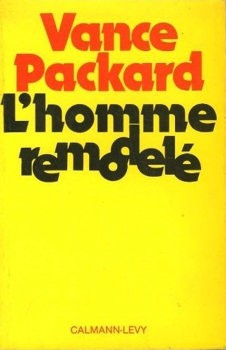 Ce nouveau mot d’ordre sonne le glas de nos démocraties. Un exemple ? La disparition du commerce de proximité au profit de la grande distribution. Les grandes surfaces se sont imposées par la douceur et la séduction à nos habitudes de consommation. Des prix bas, une gamme étendue de produits et de services : le consommateur ne résiste pas. Pourquoi résisterait-il ? Il ne veut pas comprendre que, quand la grande distribution aura totalement éliminé le commerce de proximité et quand les fusions entre groupes auront abouti à un partage stable du territoire, les distributeurs n’auront plus aucune raison de se gêner pour augmenter subrepticement leurs marges commerciales… mais ils n’auront pas davantage de raisons de revenir contrepartie de cette augmentation au choix et à la qualité autrefois assurés par le commerce de proximité ! Ils auront imposé une implacable dégradation du service rendu aux consommateurs en éliminant la production artisanale et en exigeant de leur fournisseurs rapidité d’approvisionnement et quantités industrielles au détriment de toute qualité. Lorsqu’on est parvenu à s’assurer le monopole d’un marché et que tout boycottage est devenu impossible, on peut tout à coup démasquer ses longues dents et tirer une grosse marge bénéficiaire de mauvais produits.
Ce nouveau mot d’ordre sonne le glas de nos démocraties. Un exemple ? La disparition du commerce de proximité au profit de la grande distribution. Les grandes surfaces se sont imposées par la douceur et la séduction à nos habitudes de consommation. Des prix bas, une gamme étendue de produits et de services : le consommateur ne résiste pas. Pourquoi résisterait-il ? Il ne veut pas comprendre que, quand la grande distribution aura totalement éliminé le commerce de proximité et quand les fusions entre groupes auront abouti à un partage stable du territoire, les distributeurs n’auront plus aucune raison de se gêner pour augmenter subrepticement leurs marges commerciales… mais ils n’auront pas davantage de raisons de revenir contrepartie de cette augmentation au choix et à la qualité autrefois assurés par le commerce de proximité ! Ils auront imposé une implacable dégradation du service rendu aux consommateurs en éliminant la production artisanale et en exigeant de leur fournisseurs rapidité d’approvisionnement et quantités industrielles au détriment de toute qualité. Lorsqu’on est parvenu à s’assurer le monopole d’un marché et que tout boycottage est devenu impossible, on peut tout à coup démasquer ses longues dents et tirer une grosse marge bénéficiaire de mauvais produits.




 del.icio.us
del.icio.us
 Digg
Digg
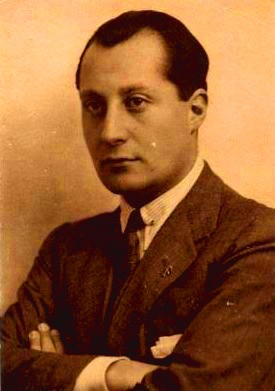 José Antonio Primo de Rivera y Saenz de Heredia Marques de Estella or José Antonio (as he is more commonly called) was born on April 24, 1903 in Madrid to grow up in a healthy aristocratic family environment as the eldest son of General Miguel Primo de Rivera, who was the Leader of Spain from 1923 to 1930. His family was socially prominent in Andalusia, having intermarried with large landholders and merchants around Jerez de la Frontera. From his father José Antonio inherited the title marqués de Estella.
José Antonio Primo de Rivera y Saenz de Heredia Marques de Estella or José Antonio (as he is more commonly called) was born on April 24, 1903 in Madrid to grow up in a healthy aristocratic family environment as the eldest son of General Miguel Primo de Rivera, who was the Leader of Spain from 1923 to 1930. His family was socially prominent in Andalusia, having intermarried with large landholders and merchants around Jerez de la Frontera. From his father José Antonio inherited the title marqués de Estella.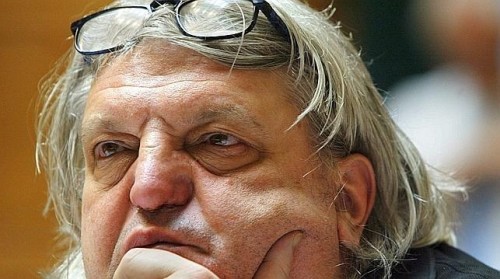
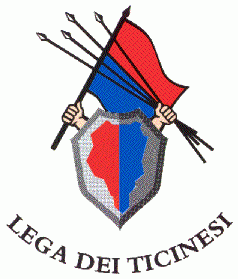
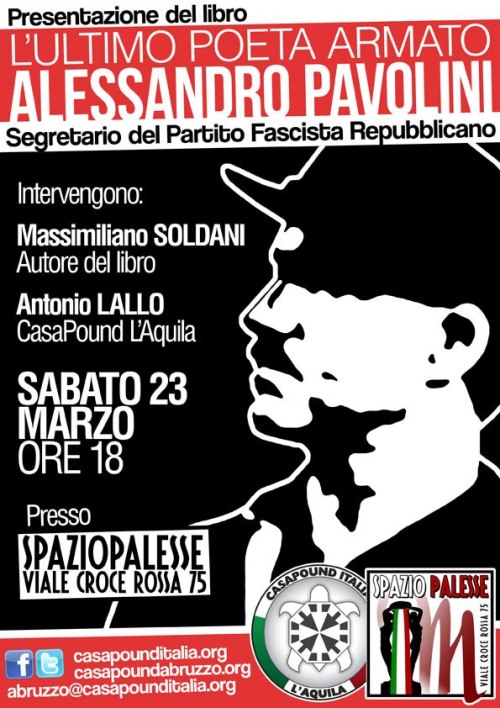
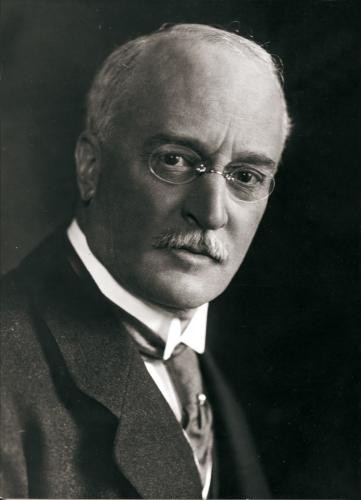 Es war ein ruhiger Abend auf See. Rudolf Diesel hatte im Speisesaal des luxuriösen Passagierdampfers “Dresden” mit einem bekannten Industriellen zu Abend gegessen. Der große, stattliche Mann mit Brille und Schnauzer war auf dem Weg nach London, wo er ein Motorenwerk einweihen sollte. In bester Laune hatte der 55-Jährige vom Deck aus noch die sternklare Nacht vom 29. auf den 30. September 1913 bewundert. Dann machte sich Rudolf Diesel, der Erfinder des Dieselmotors, auf den Weg in seine Kabine. Dies war der Augenblick, in dem er das letzte Mal gesehen wurde.
Es war ein ruhiger Abend auf See. Rudolf Diesel hatte im Speisesaal des luxuriösen Passagierdampfers “Dresden” mit einem bekannten Industriellen zu Abend gegessen. Der große, stattliche Mann mit Brille und Schnauzer war auf dem Weg nach London, wo er ein Motorenwerk einweihen sollte. In bester Laune hatte der 55-Jährige vom Deck aus noch die sternklare Nacht vom 29. auf den 30. September 1913 bewundert. Dann machte sich Rudolf Diesel, der Erfinder des Dieselmotors, auf den Weg in seine Kabine. Dies war der Augenblick, in dem er das letzte Mal gesehen wurde.



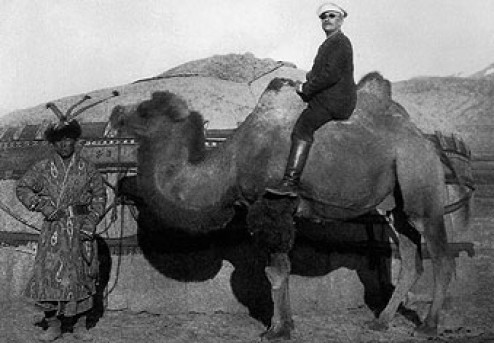

 Bref, dans notre école, nous étions la bande des “Pas-comme-les-autres”, même si Leyssens, Beerens et moi étions en apparence parfaitement “scolaires”. Debay ne l’était évidemment pas. Il sentait en lui l’appel de l’action et du grand large. Chassé de l’école après un coup fumant, qu’il narre d’ailleurs à demis mots dans le bulletin des “Amis de Jean Mabire”, Debay quitte notre institut sans regret, tout comme nous qui aspirions à autre chose, et s’inscrit à l’école “toutes armes” de Sainte-Anne à Laeken. Après sa période d’instruction et de formation, il rejoint en Allemagne le “2ème Chacha” (= “Chasseurs à Cheval”), une unité blindée équipée de petits chars britanniques de type “Scorpion”. Dans sa garnison, proche du Rideau de Fer, Debay s’est forcément ennuyé. La vie quasi courtelinesque des casernes en temps de paix, renforcée encore par le surréalisme congénital et souvent éthylique des “gamelles” belges, n’était pas faite pour lui, qui avait d’ailleurs, en plus, la nostalgie de son Afrique natale. Il se porte volontaire en Rhodésie dans l’armée de Ian Smith, où il commande une unité d’infanterie africaine engagée contre les Mozambicains qui recevaient, à l’époque, des armes soviétiques. Debay est revenu en 1979, en pleine campagne électorale pour l’élection du premier Parlement européen. La Sûreté de l’Etat belge avait interdit de parole Giorgio Almirante, pourtant candidat, et Blas Piñar, venu de Madrid pour le soutenir: les deux hommes politiques devaient expliciter leurs programmes et intentions dans les salons de l’Hôtel Métropole. Les gauchistes avaient rameuté leur ban et leur arrière-ban et occupaient le centre de la ville, menaçant de prendre d’assaut le local du futur “Parti des Forces Nouvelles”, le long du canal, où Almirante et Piñar devaient se replier (ce qu’il ne firent pas). Quelques journalistes, dont Alain Derriks que j’accompagnais, étaient présents sur place. Y compris une délégation du “Parti Ouvrier Européen”, téléguidé par Lyndon LaRouche et son épouse allemande, et qui tentait de nous démontrer que Khomeiny était un agent de l’Intelligence Service. Près de trois cents personnes étaient rassemblées près du local, pour le défendre en cas d’attaque: du jamais vu dans les annales de la “droite” musclée en Belgique. Debay n’avait évidemment pas résisté au désir de venir sur place, alléché par la perspective d’une immense bagarre de rue. Ce furent de joyeuses retrouvailles. Dans sa malette, Debay avait des photos de Rhodésie, dont celles de son ordonnance, un géant noir avec la poitrine couverte de chaînes de munitions pour sa .30, qu’il portait avec autant d’aisance qu’un gentleman de la City trimbale son riflard. Debay a évoqué ce jour-là un engagement de son peloton: les Mozambicains, armés de mortiers soviétiques, avaient déclenché le combat en canardant les Rhodésiens mais sans régler la hausse de leurs pièces. Ils tiraient 600 m trop loin. Debay avait ordonné l’assaut, baïonnette au canon: les Mozambicains continuaient à tirer et s’étonnaient que les Rhodésiens et leur grand diable de chef blanc ne tombaient pas comme des mouches...
Bref, dans notre école, nous étions la bande des “Pas-comme-les-autres”, même si Leyssens, Beerens et moi étions en apparence parfaitement “scolaires”. Debay ne l’était évidemment pas. Il sentait en lui l’appel de l’action et du grand large. Chassé de l’école après un coup fumant, qu’il narre d’ailleurs à demis mots dans le bulletin des “Amis de Jean Mabire”, Debay quitte notre institut sans regret, tout comme nous qui aspirions à autre chose, et s’inscrit à l’école “toutes armes” de Sainte-Anne à Laeken. Après sa période d’instruction et de formation, il rejoint en Allemagne le “2ème Chacha” (= “Chasseurs à Cheval”), une unité blindée équipée de petits chars britanniques de type “Scorpion”. Dans sa garnison, proche du Rideau de Fer, Debay s’est forcément ennuyé. La vie quasi courtelinesque des casernes en temps de paix, renforcée encore par le surréalisme congénital et souvent éthylique des “gamelles” belges, n’était pas faite pour lui, qui avait d’ailleurs, en plus, la nostalgie de son Afrique natale. Il se porte volontaire en Rhodésie dans l’armée de Ian Smith, où il commande une unité d’infanterie africaine engagée contre les Mozambicains qui recevaient, à l’époque, des armes soviétiques. Debay est revenu en 1979, en pleine campagne électorale pour l’élection du premier Parlement européen. La Sûreté de l’Etat belge avait interdit de parole Giorgio Almirante, pourtant candidat, et Blas Piñar, venu de Madrid pour le soutenir: les deux hommes politiques devaient expliciter leurs programmes et intentions dans les salons de l’Hôtel Métropole. Les gauchistes avaient rameuté leur ban et leur arrière-ban et occupaient le centre de la ville, menaçant de prendre d’assaut le local du futur “Parti des Forces Nouvelles”, le long du canal, où Almirante et Piñar devaient se replier (ce qu’il ne firent pas). Quelques journalistes, dont Alain Derriks que j’accompagnais, étaient présents sur place. Y compris une délégation du “Parti Ouvrier Européen”, téléguidé par Lyndon LaRouche et son épouse allemande, et qui tentait de nous démontrer que Khomeiny était un agent de l’Intelligence Service. Près de trois cents personnes étaient rassemblées près du local, pour le défendre en cas d’attaque: du jamais vu dans les annales de la “droite” musclée en Belgique. Debay n’avait évidemment pas résisté au désir de venir sur place, alléché par la perspective d’une immense bagarre de rue. Ce furent de joyeuses retrouvailles. Dans sa malette, Debay avait des photos de Rhodésie, dont celles de son ordonnance, un géant noir avec la poitrine couverte de chaînes de munitions pour sa .30, qu’il portait avec autant d’aisance qu’un gentleman de la City trimbale son riflard. Debay a évoqué ce jour-là un engagement de son peloton: les Mozambicains, armés de mortiers soviétiques, avaient déclenché le combat en canardant les Rhodésiens mais sans régler la hausse de leurs pièces. Ils tiraient 600 m trop loin. Debay avait ordonné l’assaut, baïonnette au canon: les Mozambicains continuaient à tirer et s’étonnaient que les Rhodésiens et leur grand diable de chef blanc ne tombaient pas comme des mouches...

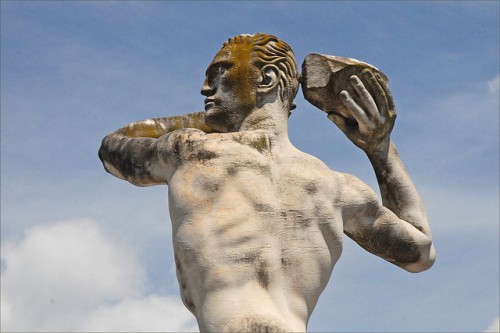



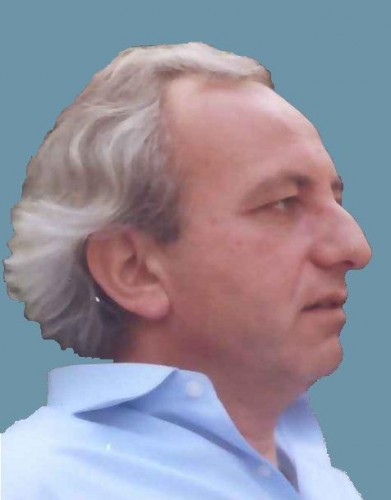
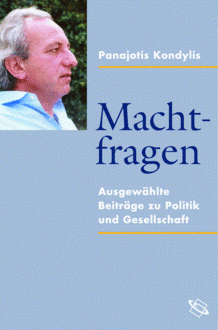 Sein erstes deutsches Buch, eine über 700 Seiten umfassende gekürzte Variante seiner Dissertation, ist in souveränem Zugriff auf die Quellen der Analyse des frühen Denkwegs von Hölderlin, Schelling und Hegel gewidmet, der Entstehung der Dialektik, deren Ursprung er in Hölderlins Vereinigungsphilosophie erkannte. Schon hier verhandelte Kondylis in systematischer Hinsicht exemplarisch das Problem der Beziehungen zwischen Geist und Sinnlichkeit, der Lust an der Macht auch in der intellektuellen Welt. Die dabei entwickelte methodische Leitfrage, „wie sich ein systematisches Denken als Rationalisierung einer Grundhaltung und -entscheidung allmählich herauskristallisiert, und zwar im Bestreben, Gegenpositionen argumentativ zu besiegen“, bleibt auch für die folgenden Arbeiten zentral. In seiner großen Studie über die Aufklärung entfaltet Kondylis 1981 eine „Entdeckung“ seines ersten Buches: die „Rehabilitierung der Sinnlichkeit“ als wichtiges Anliegen jener Epoche. Ein beachtenswertes Ergebnis war in diesem Rahmen auch seine weiterführende Diskussion des nur scheinbar strikt antagonistischen Begriffspaares Rationalismus / Irrationalismus, die den irrationalen Urgrund jedes rationalen Systems herausstellt: Rationalismus ist für ihn nur „die zweckmäßige, formallogisch einwandfreie Verwendung der argumentativen Mittel, die das Denken zur Verfügung stellt, zur Untermauerung einer Grundhaltung“; diese Grundhaltungen beziehungsweise -entscheidungen selbst liegen „jenseits logischer Begründung“, müßten also „ihrem Wesen nach als mystisch bezeichnet werden“. Rationales Denken ist demnach, mit einfachen Worten, das methodisch schlüssige Entfalten eines Vorurteils zum begründeten Urteil. In solchen Grundentscheidungen haben auch die ‚Werte‘ ihre Basis, das heißt eine rationale Letztbegründung moralischer Normen scheint nicht möglich; Kondylis’ früh an ‚klassischen‘ Texten erarbeiteter Reflexionsstand erweist sich auch hierin späteren, insbesondere im angelsächsischen Raum mit anderem Instrumentarium vorangetriebenen Arbeiten als ebenbürtig.
Sein erstes deutsches Buch, eine über 700 Seiten umfassende gekürzte Variante seiner Dissertation, ist in souveränem Zugriff auf die Quellen der Analyse des frühen Denkwegs von Hölderlin, Schelling und Hegel gewidmet, der Entstehung der Dialektik, deren Ursprung er in Hölderlins Vereinigungsphilosophie erkannte. Schon hier verhandelte Kondylis in systematischer Hinsicht exemplarisch das Problem der Beziehungen zwischen Geist und Sinnlichkeit, der Lust an der Macht auch in der intellektuellen Welt. Die dabei entwickelte methodische Leitfrage, „wie sich ein systematisches Denken als Rationalisierung einer Grundhaltung und -entscheidung allmählich herauskristallisiert, und zwar im Bestreben, Gegenpositionen argumentativ zu besiegen“, bleibt auch für die folgenden Arbeiten zentral. In seiner großen Studie über die Aufklärung entfaltet Kondylis 1981 eine „Entdeckung“ seines ersten Buches: die „Rehabilitierung der Sinnlichkeit“ als wichtiges Anliegen jener Epoche. Ein beachtenswertes Ergebnis war in diesem Rahmen auch seine weiterführende Diskussion des nur scheinbar strikt antagonistischen Begriffspaares Rationalismus / Irrationalismus, die den irrationalen Urgrund jedes rationalen Systems herausstellt: Rationalismus ist für ihn nur „die zweckmäßige, formallogisch einwandfreie Verwendung der argumentativen Mittel, die das Denken zur Verfügung stellt, zur Untermauerung einer Grundhaltung“; diese Grundhaltungen beziehungsweise -entscheidungen selbst liegen „jenseits logischer Begründung“, müßten also „ihrem Wesen nach als mystisch bezeichnet werden“. Rationales Denken ist demnach, mit einfachen Worten, das methodisch schlüssige Entfalten eines Vorurteils zum begründeten Urteil. In solchen Grundentscheidungen haben auch die ‚Werte‘ ihre Basis, das heißt eine rationale Letztbegründung moralischer Normen scheint nicht möglich; Kondylis’ früh an ‚klassischen‘ Texten erarbeiteter Reflexionsstand erweist sich auch hierin späteren, insbesondere im angelsächsischen Raum mit anderem Instrumentarium vorangetriebenen Arbeiten als ebenbürtig.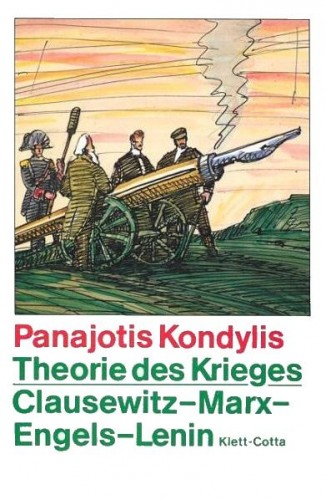 Mit zwei großen Studien über den Konservativismus (1990) und den Niedergang der bürgerlichen Denk- und Lebensform (1991), die bereits wesentliche Bausteine seiner später in Angriff genommenen systematischen Sozialontologie enthalten, leitete Kondylis auch seine intensive Beschäftigung mit den globalisierten Dimensionen heutiger Politik ein. In ihnen zeigt sich der Wert einer gründlichen und kritischen Schulung an den Originaltexten von Marx und Engels: Kondylis’ ideenhistorische Analysen, die auf idealtypische formale Denkstrukturen und –figuren ausgerichtet sind, verlieren nie die Bodenhaftung, sondern bleiben sozialgeschichtlich verortet, damit im besten Sinn konkret. Diese beiden Studien beschreiben zwei folgenreiche historische Übergänge oder Brüche in Europa: Der Konservativismus wird begrifflich der alteuropäischen, ständisch geprägten Adelswelt zugeschlagen, deren Untergang in die liberale Moderne mündete. Diese wiederum ist als Epoche der Bürgerlichkeit von einer massendemokratischen Postmoderne abgelöst worden, in der eine „analytisch-kombinatorische“ Denkfigur zur Vorherrschaft kommt und weltweit ausgreift: Die unter dem Signum einer „synthetisch-harmonisierenden“ Denkfigur stehende bürgerlich-liberale Moderne hatte in Kondylis’ Augen grundsätzlich die Tendenz, eine Harmonisierung der gesellschaftlichen Verhältnisse unter übergeordneten Kategorien, etwa dem Staat, anzustreben; die massendemokratischen Lebensformen basierten hingegen auf atomisierten, fast beliebig kombinierbaren, prinzipiell gleichberechtigten Elementen, deren kleinster gemeinsamer Nenner das Produzieren und vor allem das Konsumieren ist.
Mit zwei großen Studien über den Konservativismus (1990) und den Niedergang der bürgerlichen Denk- und Lebensform (1991), die bereits wesentliche Bausteine seiner später in Angriff genommenen systematischen Sozialontologie enthalten, leitete Kondylis auch seine intensive Beschäftigung mit den globalisierten Dimensionen heutiger Politik ein. In ihnen zeigt sich der Wert einer gründlichen und kritischen Schulung an den Originaltexten von Marx und Engels: Kondylis’ ideenhistorische Analysen, die auf idealtypische formale Denkstrukturen und –figuren ausgerichtet sind, verlieren nie die Bodenhaftung, sondern bleiben sozialgeschichtlich verortet, damit im besten Sinn konkret. Diese beiden Studien beschreiben zwei folgenreiche historische Übergänge oder Brüche in Europa: Der Konservativismus wird begrifflich der alteuropäischen, ständisch geprägten Adelswelt zugeschlagen, deren Untergang in die liberale Moderne mündete. Diese wiederum ist als Epoche der Bürgerlichkeit von einer massendemokratischen Postmoderne abgelöst worden, in der eine „analytisch-kombinatorische“ Denkfigur zur Vorherrschaft kommt und weltweit ausgreift: Die unter dem Signum einer „synthetisch-harmonisierenden“ Denkfigur stehende bürgerlich-liberale Moderne hatte in Kondylis’ Augen grundsätzlich die Tendenz, eine Harmonisierung der gesellschaftlichen Verhältnisse unter übergeordneten Kategorien, etwa dem Staat, anzustreben; die massendemokratischen Lebensformen basierten hingegen auf atomisierten, fast beliebig kombinierbaren, prinzipiell gleichberechtigten Elementen, deren kleinster gemeinsamer Nenner das Produzieren und vor allem das Konsumieren ist.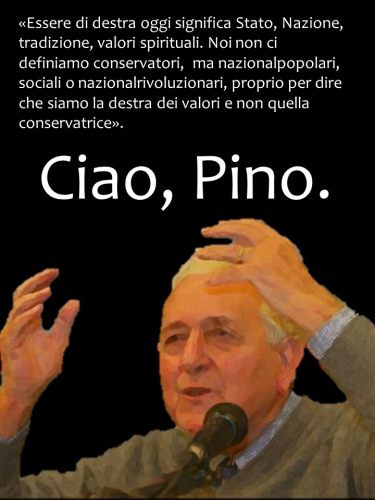


 Bauchau participe aux combats de la résistance dans la région de Brumagne (près de Namur), y est blessé. Mais, malgré cet engagement, il doit rendre des comptes à l’auditorat militaire, pour sa participation au SVTW et surtout, probablement, pour avoir signé le manifeste de fondation du “parti unique (avorté) des provinces romanes”. Il échappe à tout jugement mais est rétrogradé: de Lieutenant, il passe sergeant. Il en est terriblement meurtri. Sa patrie, qu’il a toujours voulu servir, le dégoûte. Il s’installe à Paris dès 1946. Mais cet exil, bien que captivant sur le plan intellectuel puisque Bauchau est éditeur dans la capitale française, est néanmoins marqué par le désarroi: c’est une déchirure, un sentiment inaccepté de culpabilité, un tiraillement constant entre les sentiments paradoxaux (l’oxymore dit-on aujourd’hui) d’avoir fait son devoir en toute loyauté et d’avoir, malgré cela, été considéré comme un “traître”, voire, au mieux, comme un “demi-traître”, dont on se passera dorénavant des services, que l’on réduira au silence et à ne plus être qu’une sorte de citoyen de seconde zone, dont on ne reconnaîtra pas la valeur intrinsèque. A ce malaise tenace, Bauchau échappera en suivant un traitement psychanalytique chez Blanche Reverchon-Jouve. Celle-ci, d’inspiration jungienne, lui fera prendre conscience de sa personnalité vraie: sa vocation n’était pas de faire de la politique, de devenir un chef au sens où on l’entendait dans les années 30, mais d’écrire. Seules l’écriture et la poésie lui feront surmonter cette “déchirure”, qu’il lui faudra accepter et en laquelle, disait la psychanalyste française, il devra en permanence se situer pour produire son oeuvre: ce sont les sentiments de “déchirure” qui font l’excellence de l’écrivain et non pas les “certitudes” impavides de l’homme politisé.
Bauchau participe aux combats de la résistance dans la région de Brumagne (près de Namur), y est blessé. Mais, malgré cet engagement, il doit rendre des comptes à l’auditorat militaire, pour sa participation au SVTW et surtout, probablement, pour avoir signé le manifeste de fondation du “parti unique (avorté) des provinces romanes”. Il échappe à tout jugement mais est rétrogradé: de Lieutenant, il passe sergeant. Il en est terriblement meurtri. Sa patrie, qu’il a toujours voulu servir, le dégoûte. Il s’installe à Paris dès 1946. Mais cet exil, bien que captivant sur le plan intellectuel puisque Bauchau est éditeur dans la capitale française, est néanmoins marqué par le désarroi: c’est une déchirure, un sentiment inaccepté de culpabilité, un tiraillement constant entre les sentiments paradoxaux (l’oxymore dit-on aujourd’hui) d’avoir fait son devoir en toute loyauté et d’avoir, malgré cela, été considéré comme un “traître”, voire, au mieux, comme un “demi-traître”, dont on se passera dorénavant des services, que l’on réduira au silence et à ne plus être qu’une sorte de citoyen de seconde zone, dont on ne reconnaîtra pas la valeur intrinsèque. A ce malaise tenace, Bauchau échappera en suivant un traitement psychanalytique chez Blanche Reverchon-Jouve. Celle-ci, d’inspiration jungienne, lui fera prendre conscience de sa personnalité vraie: sa vocation n’était pas de faire de la politique, de devenir un chef au sens où on l’entendait dans les années 30, mais d’écrire. Seules l’écriture et la poésie lui feront surmonter cette “déchirure”, qu’il lui faudra accepter et en laquelle, disait la psychanalyste française, il devra en permanence se situer pour produire son oeuvre: ce sont les sentiments de “déchirure” qui font l’excellence de l’écrivain et non pas les “certitudes” impavides de l’homme politisé.  En 1973, l’Institut Montesano ferme ses portes: la crise du dollar ne permettant plus aux familles américaines fortunées d’envoyer en Suisse des jeunes filles désirant s’immerger dans la culture européenne traditionnelle. A cette même époque, comme beaucoup d’anciennes figures de la droite à connotations personnalistes, Bauchau subit une tentation maoïste, une sorte de tropisme chinois (comme Hergé!) qui va bien au-delà des travestissements marxistes que prenait la Chine des années 50, 60 et 70. Notre auteur s’attèle alors à la rédaction d’une biographie du leader révolutionnaire chinois, Mao Tse-Toung, qu’il n’achèvera qu’en 1980, quand les engouements pour le “Grand Timonnier” n’étaient déjà plus qu’un souvenir (voire un objet de moquerie, comme dans les caricatures d’un humoriste flamboyant comme Lauzier).
En 1973, l’Institut Montesano ferme ses portes: la crise du dollar ne permettant plus aux familles américaines fortunées d’envoyer en Suisse des jeunes filles désirant s’immerger dans la culture européenne traditionnelle. A cette même époque, comme beaucoup d’anciennes figures de la droite à connotations personnalistes, Bauchau subit une tentation maoïste, une sorte de tropisme chinois (comme Hergé!) qui va bien au-delà des travestissements marxistes que prenait la Chine des années 50, 60 et 70. Notre auteur s’attèle alors à la rédaction d’une biographie du leader révolutionnaire chinois, Mao Tse-Toung, qu’il n’achèvera qu’en 1980, quand les engouements pour le “Grand Timonnier” n’étaient déjà plus qu’un souvenir (voire un objet de moquerie, comme dans les caricatures d’un humoriste flamboyant comme Lauzier). 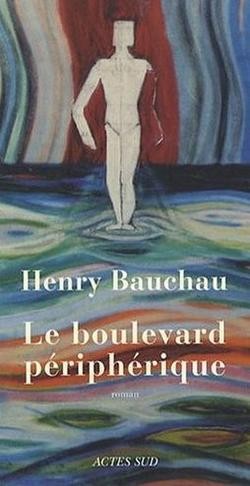 Bauchau est également un mémorialiste de premier plan, que nous pourrions comparer à Ernst Jünger (qu’il cite assez souvent). Les journaux de Bauchau permettent effectivement de suivre à la trace le cheminement mental et intellectuel de l’auteur: en les lisant, on perçoit de plus en plus une immersion dans les mystiques médiévales —et il cite alors fort souvent Maître Eckart— et dans les sagesses de l’Orient, surtout chinois. On perçoit également en filigrane une lecture attentive de l’oeuvre de Martin Heidegger. Ce passage, à l’âge mûr, de la frénésie politique (politicienne?) à l’approfondissement mystique est un parallèle de plus à signaler entre le Wallon belge Bauchau et l’Allemand Jünger.
Bauchau est également un mémorialiste de premier plan, que nous pourrions comparer à Ernst Jünger (qu’il cite assez souvent). Les journaux de Bauchau permettent effectivement de suivre à la trace le cheminement mental et intellectuel de l’auteur: en les lisant, on perçoit de plus en plus une immersion dans les mystiques médiévales —et il cite alors fort souvent Maître Eckart— et dans les sagesses de l’Orient, surtout chinois. On perçoit également en filigrane une lecture attentive de l’oeuvre de Martin Heidegger. Ce passage, à l’âge mûr, de la frénésie politique (politicienne?) à l’approfondissement mystique est un parallèle de plus à signaler entre le Wallon belge Bauchau et l’Allemand Jünger. 
